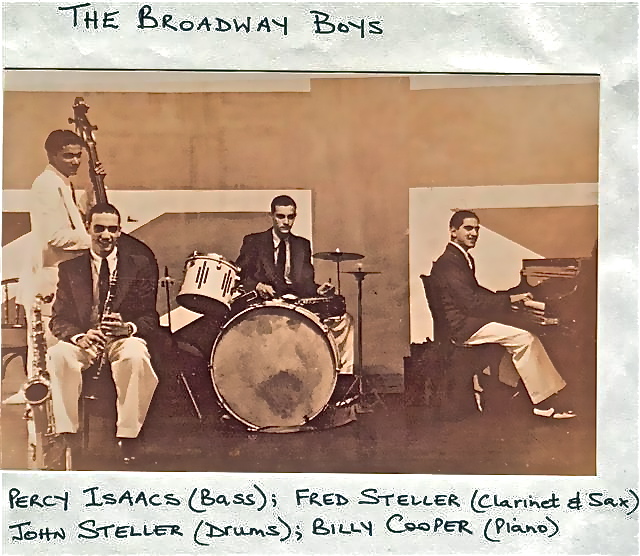
Last week, I reproduced a charming note written by Maxine Steller, a Bombay native who now lives in Australia. This week, it’s time for her husband, 87-year-old Fred Steller, to take the stage, in a long note transcribed by Maxine:
Frederick Joseph Steller was born on the 2nd December 1925. His parents were Charles Joseph Steller, who was German, and Maria Annika (Annie) Falcao de Carvalho, of Portuguese descent. Charles’ parents had come from Berlin to India with a theatrical company. Otto Herman Steller (born 1863) was a Professor of Music and his wife Ernestine, nee Hauke, (born1867) was a talented violinist from Halla. When the concert party disbanded in Bombay, they decided to stay on. Otto became the bandmaster of The Bombay Volunteer Rifles and died of meningitis in 1895 at the age of 32 years.
Ernestine went to the German Consul in Bombay and, with his aid, put her daughter, Theresa, in the Bandra Convent and her two sons, Charles and Otto, in St Joseph’s Home. The boys were eventually sent to St Mary High School, Mazagon, run by German priests. Ernestine died of cholera in 1912, aged 45 years.
The Falcao de Carvalhos, the family of Fred’s mother, originally came from Portugal and settled in Panjim and Damao. There is a plaque in the Big Market in Damao bearing the name of Jose Maximiano Falcao de Carvalho in appreciation of the good services he rendered to the people of Damao and as a mark of their love and affection to his memory. Annie’s mother Luisa Falcao eventually ran a boarding house in Wodehouse Road, Colaba. Charles Steller became a boarder and fell in love with Annie, whom he married in 1918.
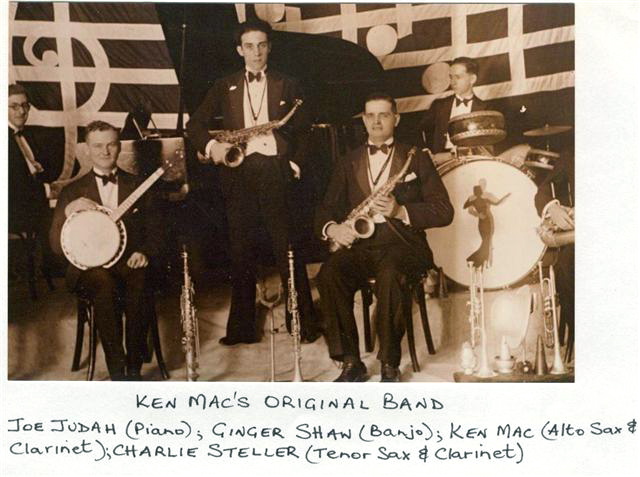 When Charles left school, he joined the Governor’s Band, playing the violin and clarinet. He eventually became bandmaster. He then went on to being bandmaster of the GIP railway band and when that disbanded became bandmaster off the BB&CI railway band. In the month of May every year, Mr Panday, a high official of Matheran would hire his band to play for concerts in the park. When the band was short staffed, Charlie would take his son Fred to play the clarinet with them. Charlie also played in the band of Ken Mac.
When Charles left school, he joined the Governor’s Band, playing the violin and clarinet. He eventually became bandmaster. He then went on to being bandmaster of the GIP railway band and when that disbanded became bandmaster off the BB&CI railway band. In the month of May every year, Mr Panday, a high official of Matheran would hire his band to play for concerts in the park. When the band was short staffed, Charlie would take his son Fred to play the clarinet with them. Charlie also played in the band of Ken Mac.
Fred Steller had two sisters, Doris and Sheila, and three brothers, Anthony, John and Wilfrid. They started out living in Colaba but when the boys grew older and needed to attend St Mary’s School, they moved to Byculla. Fred and his brothers attended St Mary’s School, Mazagaon, and, at the age of 11, he joined the school band and learned to play the clarinet. One of his teachers, Mrs Yates, taught Fred and his brother, John, to dance and they entered and won a few talent contests. They also started to sing in harmony and would perform for All India Radio’s Children’s Hour.
From an early age, Fred became an altar boy at St Anne’s, Mazagaon, and at Midnight Mass would hear the dance music coming through from the Christmas Eve ball at the Byculla Railway Institute. After Mass, he would sneak into the Institute to listen to the band playing. This is what gave him the urge to form a band and he vowed that one day he would be up on that stage playing.
In 1938, at the age of 13, Fred started a four-piece group comprising Bill Cooper (piano), John Steller (drums), Hubert Stapleton (second clarinet) and Fred on 1st clarinet. Within months, Cyril Sparks joined them on the guitar and later, Bill McMahon on the bass.
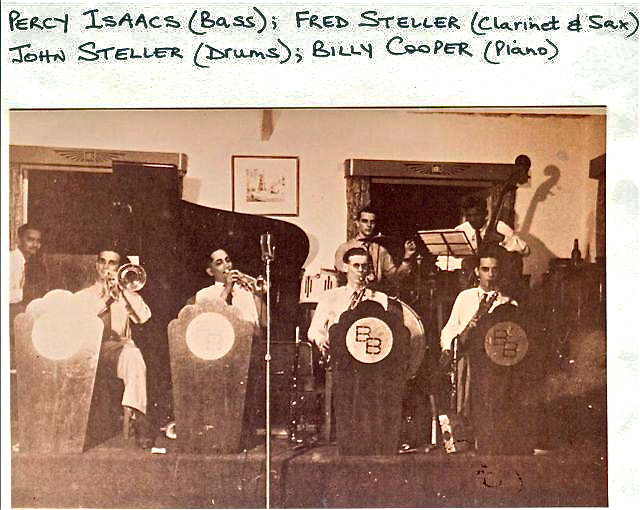 When Fred was 14, he persuaded the manager of the Railway Institute to allow his band to play free, asking only for money to pay for carting their equipment to the tennis courts. Their music took off and soon there were eight members: Bill Cooper on piano, Percy Isaacs on guitar, Cyril Sparks on bass, Fred and Brendan Thompson on clarinets, Bubbles Raccani on trumpet, John Steller on drums and Tony Steller as vocalist. In 1945, at the age of 15, Maxine Taylor (whom Fred would eventually marry) started singing with them but stopped to do her Senior Cambridge in 1946. This outfit performed at the usual places: Byculla and Parel Railway Institutes, the Police Club, the Customs Club, HM Mint, schools’ ex-student’s functions, etc.
When Fred was 14, he persuaded the manager of the Railway Institute to allow his band to play free, asking only for money to pay for carting their equipment to the tennis courts. Their music took off and soon there were eight members: Bill Cooper on piano, Percy Isaacs on guitar, Cyril Sparks on bass, Fred and Brendan Thompson on clarinets, Bubbles Raccani on trumpet, John Steller on drums and Tony Steller as vocalist. In 1945, at the age of 15, Maxine Taylor (whom Fred would eventually marry) started singing with them but stopped to do her Senior Cambridge in 1946. This outfit performed at the usual places: Byculla and Parel Railway Institutes, the Police Club, the Customs Club, HM Mint, schools’ ex-student’s functions, etc.
Fred worked hard arranging the music, getting the group to practice and organizing the bookings. The band became very successful and popular over the years, especially for Christmas and New Year’s Eve dances. They were all young and appealed to their youthful audiences. They were even hired to play upcountry in Kalyan, Gungapore and Dohad, where the railway communities were starved for good musical entertainment.
Fred purchased a second hand saxophone in June 1946 at a cost of Rs 850 and took a few lessons from a brilliant tutor and musician, Hal Green (from Ken Mac’s band), and whilst doing so, met a Norwegian alto sax player, Ollie Risoe, who later joined the group. Ollie also wrote and transcribed band music.
When Billy Cooper left, Fred replaced him on the piano with Francis Saldanha, recommended by Hal Green. Fred started using orchestrations and the band members increased to a nine piece orchestra, including Ollie. At Christmas and New Year’s Eve they would start at the Byculla Railway Institute (9pm-1am) and go straight on to the Police Club (1.30-4am), a very long night for them. They also entertained at the Allied Airforces Club (during the War), the Ritz and the Ambassador.
In October 1947, the original Broadway Boys finally disbanded with the departure of Tony and John for Australia but Fred continued with a quartet comprising Arthur Jacobs (piano), Johnny Fernandes (drums), Percy Isaacs (bass) and himself (tenor sax and clarinet). He kept going until just before his departure for Australia.
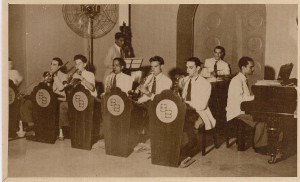 Musicians are always advised to have a “proper job” and in 1947, Fred joined Westrex in the Metro Cinema building at Dhobi Talao as a sound engineer and, in conjunction with his apprenticeship, did a radio course at the Radio & Electric Institute, Lamington Road, and then a projection course at St Xavier’s College. He assisted Cyril George, a
Musicians are always advised to have a “proper job” and in 1947, Fred joined Westrex in the Metro Cinema building at Dhobi Talao as a sound engineer and, in conjunction with his apprenticeship, did a radio course at the Radio & Electric Institute, Lamington Road, and then a projection course at St Xavier’s College. He assisted Cyril George, a
Westrex sound engineer, on the Metro Theatre conversion from RCA to Westrex equipment, starting at midnight every night, after the last show was over and working until 8 or 9am every morning. Later Fred had the pleasure of installing brand new equipment at the New Empire Theatre with a fellow engineer, Mr Bapat. He also did a fair bit of travelling in upcountry areas, such as Bundi State, Surat, Ahmedabad, Baroda, Mhow, Igatpuri and Indore, usually by train.
He would work under very primitive conditions with a lack of fresh water and food, and poor sewerage conditions but the gratitude of the humble villagers once the movies started, outweighed the hardship. They treated him like a god and would put garlands of flowers on the equipment and do puja to it.
The 1940s was the era of big bands and great music. When a musical movie came to the cinemas, local bands were provided with professional copies of the music it featured. Fred would go to the publicity department of Metro Goldwyn Mayer, 20th Century Fox, Columbia, etc and they would issue orchestrated music with the proviso that he announced the movie before playing the song. Fast numbers, foxtrots, waltzes were all included in the BB repertoire. The young people loved to jive and then have a cuddle during the slow numbers. Benny Goodman, Artie Shaw, Glen Miller, Harry James, Xavier Cougat, the Dorsey Brothers, Louis Armstrong, Ted Heath, Woody Herman were all revered for their talented performances.
The Broadway Boys were unique as they were young, talented and charismatic and attracted the younger generation to them. Fred, Tony and Cyril Sparks would sing in harmony during the second chorus of some numbers to the delight of the dancers. John would hold the mike and sing while he was drumming, which went over well.
Fred Steller’s sister Doris sang with her father’s outfit, which was called the Karl Starr band. In addition, she also performed with Mink Devine’s Band and Mehli Mehta’s Trio, both at the Taj. She also made records with Joe Rich’s band, which performed Hawaiian tunes. (There’s one at the end of this piece.)
 Fred emigrated to Australia in 1950, arriving in Sydney in May. He joined National Theatre Supply Co, a subsidiary of Greater Unions. He did shift work and there was no opportunity to do band work. Later he joined a trio, playing mostly at local parish functions, weddings and bowling club dances.
Fred emigrated to Australia in 1950, arriving in Sydney in May. He joined National Theatre Supply Co, a subsidiary of Greater Unions. He did shift work and there was no opportunity to do band work. Later he joined a trio, playing mostly at local parish functions, weddings and bowling club dances.
His brother John, who had been the drummer of the Broadway Boys, later took the stage name Larry Stellar. He performed big concerts in Australia and then around the world – in London, Spain, Tokyo, Hong Kong and the US. In 2006, having already received several prestigious awards, he was given the Order of Australia Medal for his services to the entertainment industry and for his community-oriented fundraising concerts. More about him on his website here.
The Broadway Boys never made any recordings but here’s one of Doris Steller from 1944, with the Joe Rich band. She’s now 92.


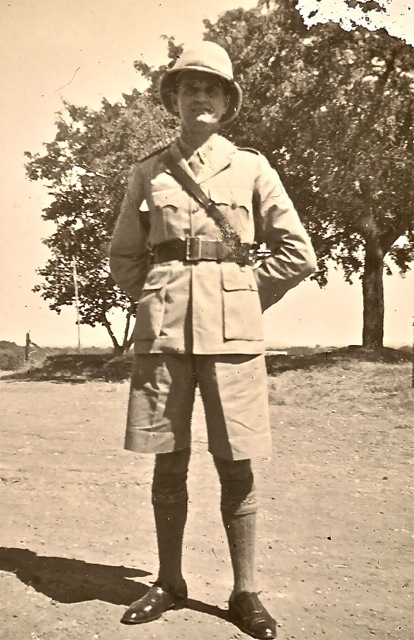
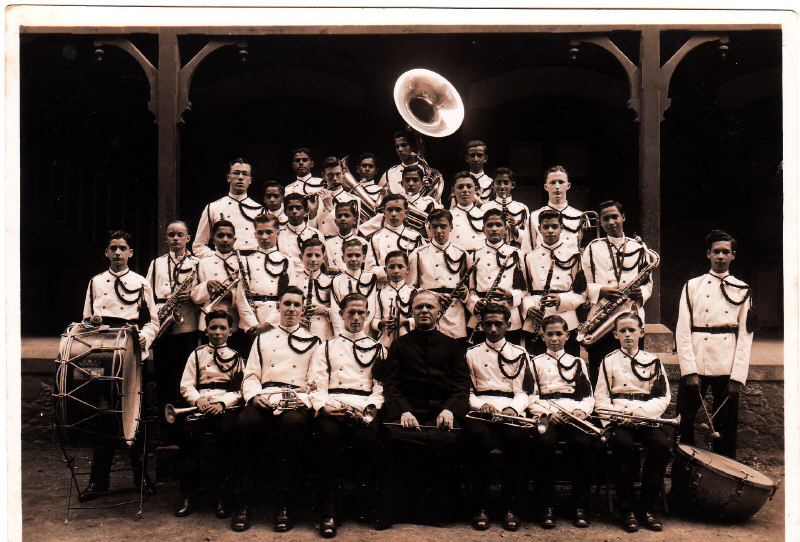
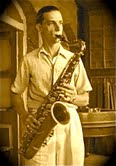
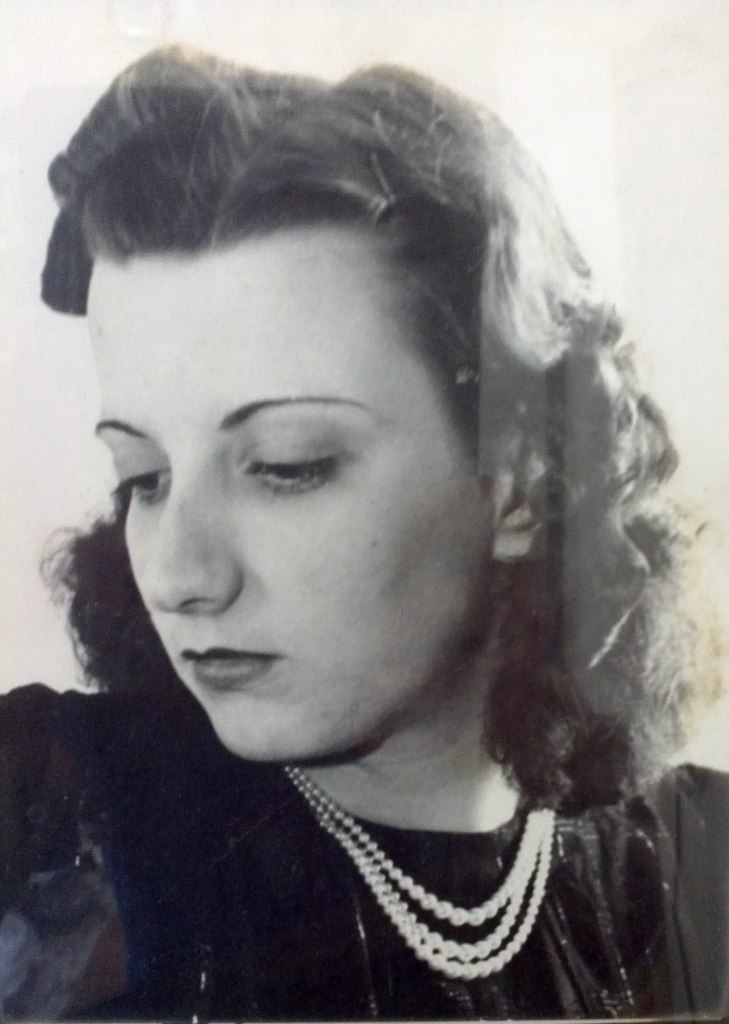
8 comments
Naresh,
Your posts are simply fascinating. They reveal unknown, swirling, interconnected, mixed-up, uncanny criss-crossing histories united improbably by two constant threads, fascinating in themselves, Bombay and music. As a hybrid, like so many of the performers you profile, with a Bombay connection and a musical past, I simply revel in everything you post. As for the book, having lugged it to Dilip’s for you to sign, I may just have to lug all the way back to Bombay again next time I come. It’s too gorgeous and too interesting and too well written for me to own it without your signature.
Waiting for your next post,
Mira
Thanks so much, Mira.
Naresh
Awesome. Loved reading this. I have a vested interest. I must explain. I know Fred and Maxine and refer to them as Aunty and Uncle. My father was the trumpet player in the Broadway Boys, Augustus ‘Bubbles’ Raccani. That first photo of St Mary’s School has my father and 2 uncles in it. They were Loves- Dennis and Michael. Michael went on to join the Jesuits and Dennis emigrated to England. Their eldest sister, Kathleen, married Bubbles. Together they had 8 children and I am No.5, Kathleen jnr.
Loved seeing pictures, reading this report.
Love the Stellers. I have listened to the brothers harmonising. I have been entertained by Larry many times.
How I wish I could go back to those wonderful days and been entertained by those Broadway Boys!!!!
great report and pics.
Look forward to more pics of mumbai.
This is a treasure of a story So rich in content Despite the advance in time the Stellers’ memory is so sharp and the account so well written by Maxine One can feel the times The sepia toned pictures too add beautifully to the story Just wonderful
Hats off to you Naresh that you can dig out all of this and present it to this nich scattered audience across the globe
And Maxine’s memory is supplemented by a fabulous photo album. She’s been sending me some real treasures. She’s incredible!
I cant wait for more of your stories from Maxine.
Mum Cynthia Cooper Nee Norton…was always singing Billy Coopers bands songs etc. her stories are my memories, and now I am overwhelmed to read all your info and of Maxine’s.
Regards Jillian
I enjoy reading these posts …. I live in Australia now and sadly miss the Mumbai I knew in the sixties….. and love reading of the music and life of our people in Mumbai…… and India generally… how can I get the book please. Thank you for your articles…